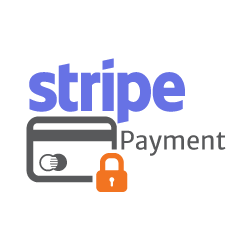What is Schema-Focused Therapy?
Schema-focused therapy is a technique used by mental health providers to help clients overcome repetitive thought patterns. The American Psychological Association (APA) has several definitions for the term “schema” one of which being “an outlook or assumption that an individual has of the self, others, or the world that endures despite objective reality.”
In the context of schema-focused therapy, an example of this would be someone who has a persisting negative view of themselves along the lines of “I am worthless” or “I am never enough.” This thought persists and repeats itself throughout every life experience, impacting how they exist and respond in that experience. For example, having repetitive thoughts like this can impact intimate relationships, friendships, mental health, and more.
Schema-focused therapy aims to alter and change these persistent and negative thought patterns so that they can stop having a poor impact on that individual’s life.
Who Benefits from it?
Anyone battling persistent “schemas” or thought patterns could benefit from schema-focused therapy. Some of the most common conditions that are treated using this technique include:
- Post Traumatic Stress Disorder (PTSD)
- Anxiety
- Depression
- Personality Disorders (BPD)
- Addiction
The Foundations of Schema-Focused Therapy:
During schema-focused therapy, therapists work to discover and comprehend different thought patterns found in their client’s life. This relatively new technique combines pieces of Cognitive Behavioral Therapy (CBT), psychoanalysis, attachment theory, and emotion-focused therapy.
The foundations of schema-focused therapy hinge on schemas that impact an individual’s ability to cope with situations or those that create problematic behaviors. The ultimate goal is to reteach important strategies that empower a client to have their emotional needs met.
The Development of Schemas as Children
An important question that schema-focused therapy addresses are where/when these negative schemas developed throughout an individual’s life that they are now deep-rooted, repetitive, and persistent. The developers of this technique believe that some of the largest contributors to an individual’s schema development are the experiences of childhood.
The idea is that when a caretaker fails to meet the emotional needs of a child then that child develops a schema that prevents them from meeting their own emotional needs as adults. Core emotional needs include things like feeling safe, having a secure attachment style, a sense of autonomy, the ability to express emotions, and the formation of healthy boundaries.
When these emotional needs are not met as children, there is no starting part for an individual to meet those needs in the future. For example, if a caretaker did not set healthy emotional boundaries with their child, that child might struggle to set healthy emotional boundaries with themselves and with others in the future.
The Different Types of Schemas
There are 18 distinct schemas that fall into five categories. These maladaptive schemas are themes and patterns that individuals repeat throughout their lives that are ultimately damaging to the view of the self.
Disconnection and Rejection
- Abandonment/Instability
- Mistrust/Abuse
- Emotional Deprivation
- Defectiveness/Shame
- Social Isolation/Alienation
Impaired Autonomy and Performance
- Dependence/Incompetence
- Vulnerability to Harm or Illness
- Enmeshment/Undeveloped Self
- Failure
Impaired Limits
- Entitlement/Grandiosity
- Insufficient Self-Control/Self-Discipline
Other Directedness
- Subjugation
- Self-Sacrifice
- Approval-Seeking/Recognition
Over Vigilance and Inhibition
- Negativity/Pessimism
- Emotional Inhibition
- Unrelenting Standards/Hypercriticalness
- Punitiveness
Their Impact on Coping Mechanisms
How an individual handles or responds to their schemes is defined as their coping mechanism or strategy. Because schemas are painful to experience, individuals develop responses that shield them or protect them from feeling that pain so that it does not overwhelm them.
Coping mechanisms are often developed as children as a response to the development of schemas and the failure to have emotional needs met. As children, coping mechanisms are vital for survival. As clients age, those coping strategies attached to certain schemas can prevent the development of a healthy mind, relationships, and behaviors.
Coping mechanisms prevent an individual from addressing their schemas, holding them in a cyclical pattern as they go through life.
Schema-focused therapy aims to identify schemas and the corresponding coping strategies of an individual to hopefully help them develop healthier responses to those thought patterns and ultimately help them overcome them.
There are four different Schema Modes. These four categories are child modes, which are childlike feelings or behaviors, poor coping modes that are used to protect one’s self from emotional distress, dysfunctional parent modes or internalized harsh parental voice, and healthy adult mode.
The Goals of Schema-Focused Therapy
The goal of schema-focused therapy is to help a client reach the “healthy adult” schema mode. Reaching this mode means that a client has developed a healthy perception and functionality of their own self. This model exists as a self-regulating tool when destructive schemas emerge or persist.
Therapists that use schema-focused therapy should utilize a combination of techniques that exist across CBT, attachment theory, psychoanalysis, and more to identify schemas that exist in their clients and guide them through the development of healthy coping mechanisms and a healthy sense of self.







